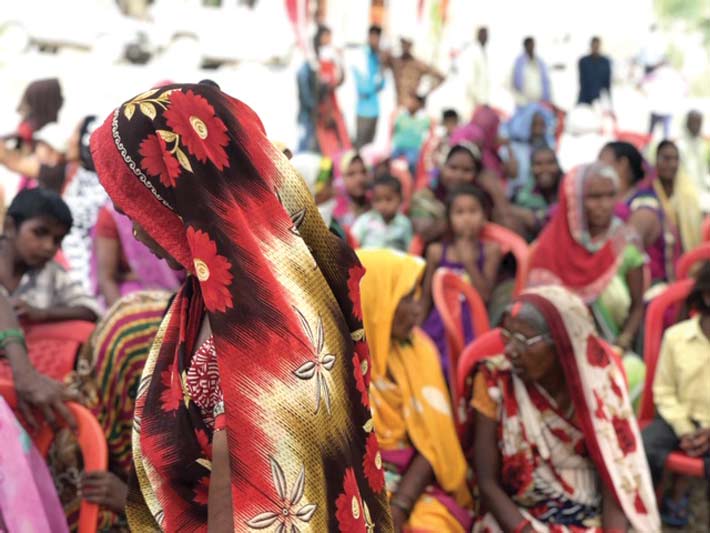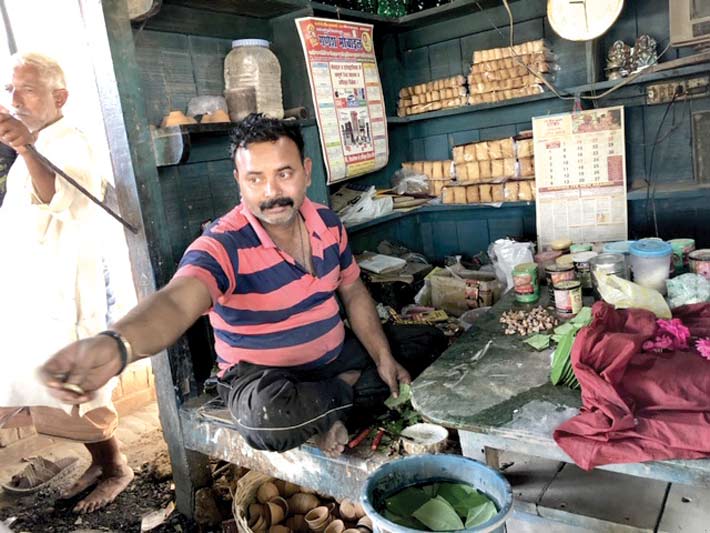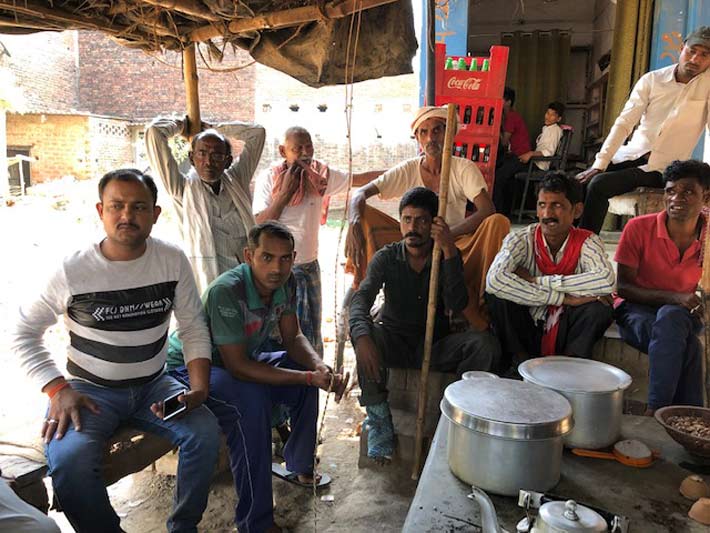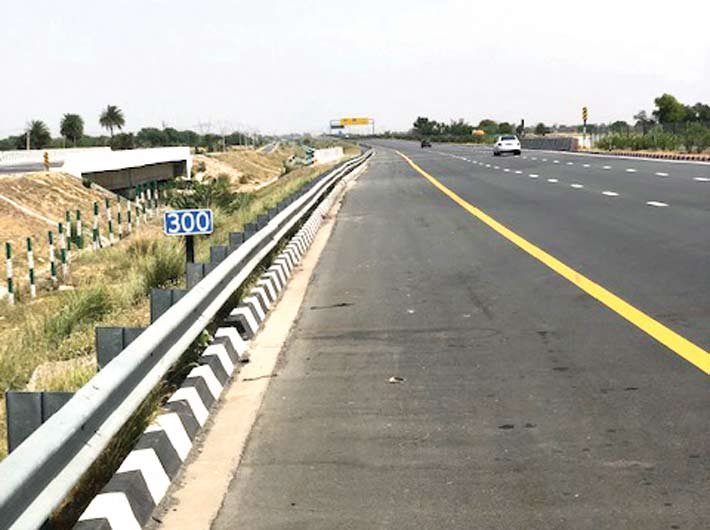What a drive through the Hindi heartland reveals: highways and infotech are spawning a surprising homogeneity. Old identities are pushed back, upsetting traditional political equations
“Kos kos par badle paani, chaar kos par vaani,” goes the old adage, encapsulating the diversity of languages, cultures and geographies in India. At every couple of kilometres, water tastes different, and the dialect itself changes at about eight kilometres, we are told.
Now that adage itself should change, because India is changing. Ironically, the change is bringing more homogeneity. The more things change, the more they are becoming the same. Uniformity is spreading fast, aided by better highways, better data connectivity, and market economy. In the process, a new topography is emerging, diluting the old divisions of rural-urban, caste, class and communities. The differences of identities look towards the past; the commonality of aspirations looks towards a future. This is the key factor that is impacting the ongoing general elections.
The phenomenon is so obvious that, like most things obvious, it takes a conscious effort to notice it. To get a glimpse of this new-India-in-the-making, a Delhi-Lucknow drive is as good a candidate as any.
It was barely a decade ago that a Delhi-Lucknow trip via National Highway-24 used to be quite an adventure. Now there are three excellent highways connecting the national capital and the Uttar Pradesh capital, all promising an equally smooth drive. Apart from NH-24, one can drive on NH-2, reach Kanpur and take the state highway to Lucknow. For the best driving experience, take the Yamuna Expressway (Noida-Agra), and continue the journey onward on the Lucknow highway built by the Akhilesh Yadav government with much fanfare. The drive is so smooth that at times it can lull the driver to sleep.
But if you keep your eyes open over the nearly eight hours of the drive, you will notice the scene outside is not changing much, in tune with the drone of the moving vehicle. Kilometre after kilometre, it is the same ambience, with little variation. One green farm follows another, monotony broken once in a while by a small town that however sports the same hoardings and billboards. Signage along the way, in English and Hindi, stick to international norms. Old-fashioned dhabas, with their famed local specialties, are now rare. Their place is taken up by swanky food plazas, offering the same pan-Indian menu. A weary driver looking for a cup of tea will instead find one of the coffee shops of the franchises that one usually finds in the upscale neighbourhoods of a metropolis.
This display of uniformity is not confined to this one highway alone.
The Narendra Modi government went on overdrive in constructing new highways and expanding existing highways. During the last year, 2018-19, the National Highway Authority of India (NHAI) oversaw construction or expansion of highways totalling a length of 10,800 km. In comparison, the highest figure achieved by the previous UPA-II regime was 5,732 km (2012-13). The focus on infrastructure began with Atal Bihari Vajpayee’s dream of a Golden Quadrilateral, an expressway of four flanks connecting the four corners of the country. The goal was to ease the movement of goods, bring efficiency to logistics, and generate a multiplier effect for the growth of the whole economy. Infra focus continued over the UPA years, but it was during the past five years that it was taken up in the mission mode.

The result is a far more inter-connected country with highways in far better conditions. A Delhi-Lucknow drive is not much different from a Jaipur-Ahmedabad drive, with the same chains of food plazas and coffee shops along the way.
This display of uniformity is not confined to the highways alone. It is spreading from the highway to abutting towns and cities, shaking up the social dynamics inside.
As if reflecting the homogenisation of the landscape along the way, there is incipient homogenisation within the cities. Consider the case of Lucknow, the capital of Uttar Pradesh, the state that is the key to the outcome of the Lok Sabha elections.
The city, synonymous with tehzeeb and other old-world charms, is no longer living in the old world. Recent years have witnessed dramatic development of urban infrastructure here: well-paved roads, sprawling parks, and the refurbishing of Hazratganj which gives the impression of being a mini Connaught Place. At the centre of Hazratganj is a metro station from where one can take a smooth ride right through the densest area of city covering Charbagh and Alambagh. This new mode of transport and the redoing of Lucknow are the projects initiated by Mayawati or Akhilesh Yadav. In no way can the BJP claim credit for changing the face of Lucknow.
Yet the BJP appears set to benefit most from this change that is making one neighbourhood resemble another. Lucknow residents happily acknowledge that their city looks far better than what it was a decade back. Dr Ram Kapoor, an eye specialist living in the Chowk area of the walled city, claims that now you can find the best of both the worlds in Lucknow: best urban services and facilities comparable to those in Delhi or Mumbai – only cheaper and with an easier paced lifestyle. Muhammad Muzammil, a professor of economics, believes the transformation of Lucknow would influence people’s political conduct.
“There does not seem to be a challenge to the BJP,” he adds.
The affluent in Lucknow are known for their extravagant pastimes, and now they have discovered a new one. They go for a fun drive to Agra in the morning, have dal makhani and kababs at the Taj Mughal hotel for lunch, and return in the evening to have dinner at home. “I know many people who have become fond of fun drives,” says Dr Kapoor.
Lucknow is silently changing beyond recognition. Its famed nazakat (cultural sophistication) of yesteryear is mutating into an assured cockiness of the nouveau riche with no connection to the past. Lucknow’s city life, in other words, is no different from that of Delhi or Mumbai. That is becoming true of more and more cities in India.

Lucknow is not alone in this metamorphosis. Along the highway, Kanpur, once upon a time a burgeoning hub of trade and industry, has been coming out of its long years of downturn, and promising to undergo similar changes as it braces for a metro project. In Allahabad (now Prayagraj), urban amenities created for hosting the Kumbh Mela have given the city a thorough overhaul. The traffic congestion on the streets is a thing of the past as a demolition drive cleared the space for building wide networks of roads in the city.
The most significant change has taken place in Varanasi, prime minister Narendra Modi’s constituency. A drive from the airport to the city, considered the most densely populated place on the earth, gives the impression of travelling through a metropolis. The smooth drive up to the Cantonment area would appear to be a dream to anyone visiting Varanasi after a gap of five years. Inside this ancient city and at its famous ghats along the Ganga, a unique variety of street lighting, “heritage lights”, has come up. The Kashi Vishwanath corridor is being cleared up to accommodate a massive structure of the temple extending up to the river. Surely the adjacent Kachauri Gali, where devotees partake of morning breakfast after visiting the temple, would be submerged in this culture of grandiosity. “Given the scale and speed with which Varanasi is getting transformed, it is bound to subsume smaller cultures,” says Dr MK Singh, professor of ophthalmology at Sir Sunderlal Hospital of the Banaras Hindu University (BHU). “It is a change for the better, as it has effectively broken stagnation and inspired people to strive for a better and cleaner life,” he adds.
This development is arguably not without its flip side. A senior IAS officer in Lucknow rues the fact that many of these urban development projects were undertaken by diverting funds from smaller areas to big cities. The officer fears discontentment among people of smaller cities and towns. “We have not got any extra funds for Varanasi or Allahabad,” he says. The state government has been using up the funds meant for other areas to concentrate development in Varanasi, Allahabad or Mathura. “This is leading to a lopsided situation with an oasis of development in big cities in the midst of an essentially backward state,” he concludes.
Notwithstanding the assertion of the officer, no murmuring of disapproval is heard from the ground. If anything, the process is only generating new dreams for those left out so far: if such unbelievable changes are taking place in the nearby city, it will surely happen in our town too; let’s give it five more years. People in villages and small towns too are moving up the ladder, with electricity supply finally reaching every village, and the push for providing cooking gas connection to all below-poverty-line households.
In any case, the improvement of physical infrastructure is not confined to the larger cities and slowly moving towards the interiors.

Ghazipur, once among the most backward areas of eastern Uttar Pradesh, was till recently known as a hub of drugs supply and mafia gang wars. Since 2014, however, it has undergone a silent transformation. Manoj Sinha, a graduate of the famed Institute of Technology of BHU (BHU-IT) and now a union minister, carried out unprecedented development work in the constituency. A four-lane highway connecting Varanasi and Gorakhpur via Ghazipur is being constructed at fast pace. The city boasts of having the most modern railway station which is now well-connected with major cities of the country. A long-pending project of building a bridge on the Ganga was completed ahead of schedule to ease both road and rail traffic between Uttar Pradesh and Bihar. Even an airport is under construction. A slew of central projects have come up in Ghazipur which stands only second to neighbouring Varanasi in terms of development in eastern UP.
This narrative – of development, of hope, of new possibilities – is unfolding across all over Uttar Pradesh as in many other regions of the country. Physical highways are complemented by information highways. Like the advent of railways and urbanisation, this is another aspect of modernity that is pushing traditional caste boundaries behind. The result is an upheaval in old social equations. Rigid differences of caste and community identities are giving way to uniform aspirations – of better service delivery, better electricity supply, better job and entrepreneurial opportunities.
National and state highways have facilitated the movement of people and spawned a new generation of entrepreneurs and professionals who are not apologetic about materialistic aspirations. This generation consciously shuns nostalgia and looks forward to building a ‘utopia of utilitarianism’. The interconnectedness heightened by the use of IT has radically altered the conventional social codes and generated new opportunities that have given birth to a new entrepreneur class even in rural areas. Along the highways have come up training institutes, medical colleges, universities and institutes for vocational training that have changed the rural landscape and blurred the urban-rural divide.
Just as the railways had fuelled industrialisation and created a class of businessmen who supplanted the traditional social elites and aristocrats, highways and information technology have totally changed the equation that a tribe of power-brokers have with the state. Their role stands cut down to size. The people who were eligible for allocation of a house under the Pradhan Mantri Awas Yojana got it, by the simple fact that their name figured in the below poverty line (BPL) list — they did not have to plead for help from any local power-broker. They did not have to go to the gram pradhan or mukhiya with folded hands to expedite the payments. They got the money directly in their bank accounts. Similarly, they received '12,000 straight away in their account for building toilets. The rural rentiers profiting from their political connections on the basis of identity politics are rendered ineffective as information technology has built new channels between the state and citizens.
Across the Hindi heartland, be it in Etawah or Lucknow, Raebareli or Amethi, Allahabad or Varanasi, a substantial section of power-brokers thriving on patronage seems to be fighting for survival and is desperately trying to cling to identity politics. The Samajwadi Party-BSP coalition offers a ray of hope to them as both the parties are known for promoting and patronising elites on the basis of caste identity. The BJP’s advocacy of Hindutva covers such a large spectrum of the society that it has a severe handicap in patronising such a group of power-brokers. As for the Congress, it is hardly a force to reckon with in Uttar Pradesh where it has lost its clout.
In this election, there is no doubt that this radical disruption of old social equations has ranged well-entrenched caste elites against the forces of transformation. The BJP is seen as a harbinger of this transformation. The never-before changes are bound to throw up significant surprises when the votes are counted.
ajay@governancenow.com
(This article appears in the May 15, 2019 edition)

